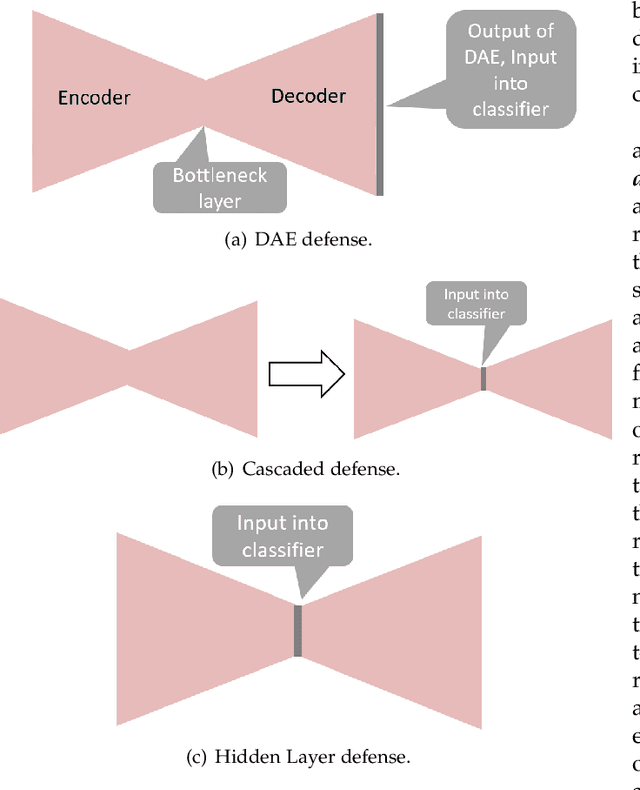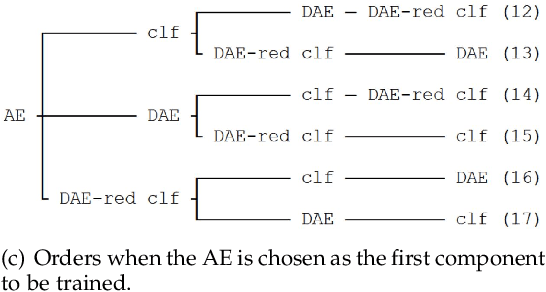Mitigating Gradient-based Adversarial Attacks via Denoising and Compression
Paper and Code
Apr 03, 2021



Gradient-based adversarial attacks on deep neural networks pose a serious threat, since they can be deployed by adding imperceptible perturbations to the test data of any network, and the risk they introduce cannot be assessed through the network's original training performance. Denoising and dimensionality reduction are two distinct methods that have been independently investigated to combat such attacks. While denoising offers the ability to tailor the defense to the specific nature of the attack, dimensionality reduction offers the advantage of potentially removing previously unseen perturbations, along with reducing the training time of the network being defended. We propose strategies to combine the advantages of these two defense mechanisms. First, we propose the cascaded defense, which involves denoising followed by dimensionality reduction. To reduce the training time of the defense for a small trade-off in performance, we propose the hidden layer defense, which involves feeding the output of the encoder of a denoising autoencoder into the network. Further, we discuss how adaptive attacks against these defenses could become significantly weak when an alternative defense is used, or when no defense is used. In this light, we propose a new metric to evaluate a defense which measures the sensitivity of the adaptive attack to modifications in the defense. Finally, we present a guideline for building an ordered repertoire of defenses, a.k.a. a defense infrastructure, that adjusts to limited computational resources in presence of uncertainty about the attack strategy.
 Add to Chrome
Add to Chrome Add to Firefox
Add to Firefox Add to Edge
Add to Edge